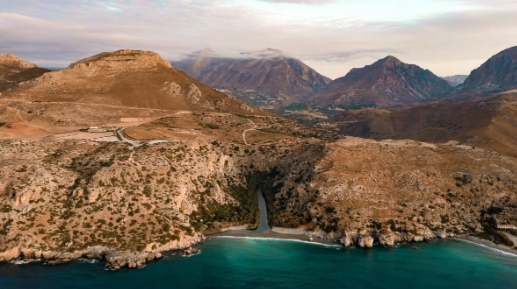
Aerial view of Crete
In November 2024, China’s State Grid International Development Ltd., a subsidiary of State Grid Corp., acquired a 20% stake in Ariadne Interconnection. The grid line enhances Greece’s energy infrastructure by integrating Crete into the mainland electricity network, enabling approximately 2.5 gigawatts of new renewable energy capacity. It also allows Crete to phase out costly fossil fuel units, such as diesel stations, reducing electricity costs for consumers nationwide and cutting carbon dioxide emissions by over 400,000 tons in its first year.
The Attica-Crete connection strengthens regional energy networks, positioning Crete as a hub for future submarine cable projects, including planned links to Cyprus, Israel, and Egypt. IPTO completed the €1.1 billion ($1.24 billion) project in just 4.5 years, faster than similar European initiatives, which often exceed seven years. Funding came from the European Union and domestic sources. This high-voltage direct current (HVDC) system, Greece’s first, is separate from a 2021 Peloponnese-Crete connection with a 400-megavolt-ampere capacity.
Manos Manousakis, IPTO’s Chairman and CEO, stated: “The operation of the Attica-Crete interconnection is a milestone for Greece’s energy transition. It not only enhances energy security for Crete but also supports the integration of renewable energy sources, significantly reducing environmental impact and consumer costs.” The project’s success informs IPTO’s plans for a second HVDC link to connect the Dodecanese Islands to the mainland grid, further expanding Greece’s renewable energy infrastructure.
The Ariadne Interconnection supports Greece’s shift toward sustainable energy for domestic consumption, lowering reliance on fossil fuels without affecting trade dynamics. Its environmental and economic benefits position Greece as a leader in regional clean energy development.